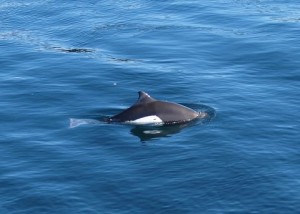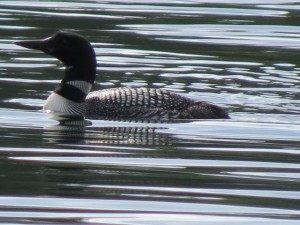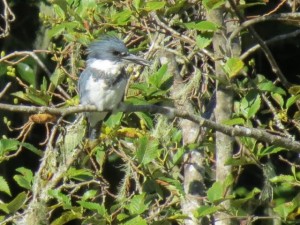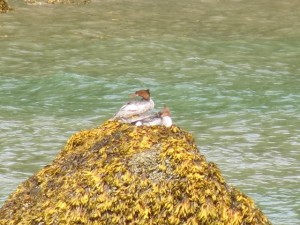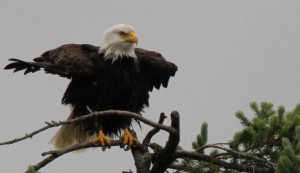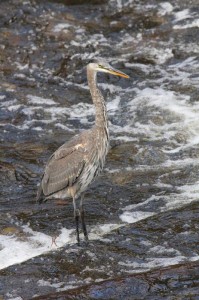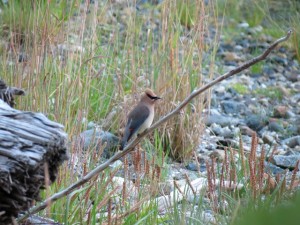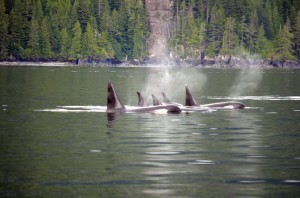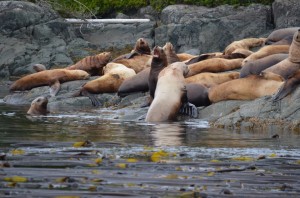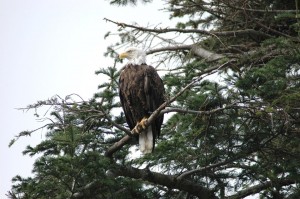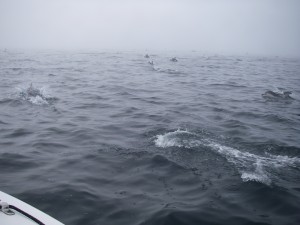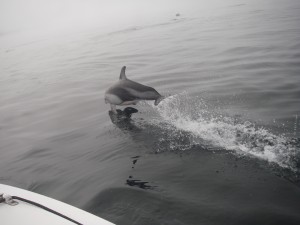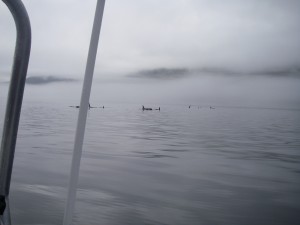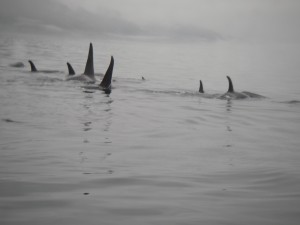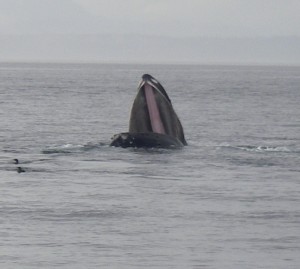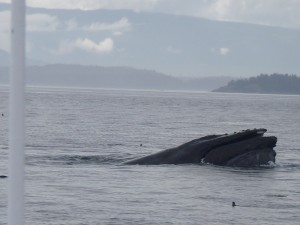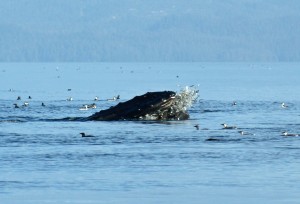
Whale watching tours from Grizzly Bear Lodge on Knight Inlet’s Minstrel Island travel about fifty minutes to the viewing area. The viewing area being Johnston Straits between Vancouver Island and mainland British Columbia. Over the past several years the number of humpback whales in this area has increase from three or four per trip to sixteen to eighteen. It is an area with an abundance of feed in the form of herring. The above photo by Gary Wilson of Australia shows a humpback lunge feeding on herring. The whales come up beneath a ball of herring with mouths open and try to capture ALL the herring but as this photo shows they are not always successful. You will notice that it is a common enough occurrence that the duck do not seem to be to concerned.
